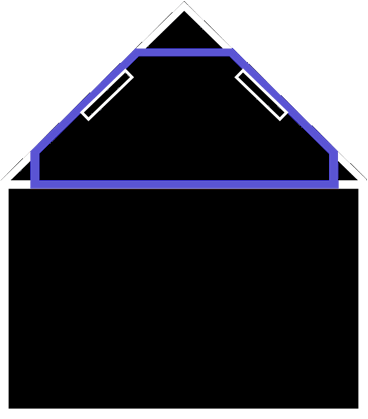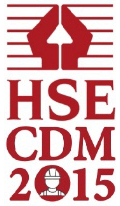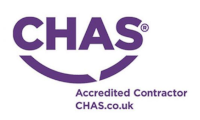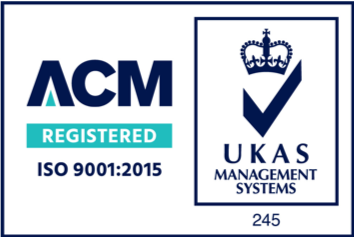Loft Conversions
What are the different types of loft conversion?
We have provided beautiful loft conversions across Surrey, London and surrounding areas for almost 20 years. There are a number of alternate loft conversion solutions and our expertise will help advise you which will best suit you and your home. There are several factors to consider in addition to understanding what you and your family want from your home, such as loft planning permission, house type, conservation areas, loft building regulations, roof height and available space. The main types of loft conversion are illustrated below, it is important to consider that these can then be adapted and made bespoke to suit your home:

Rear Dormer Lofts
A dormer loft conversion is an extension to the existing roof, creating additional floor space and headroom within the loft conversion. Dormers can be built in various styles, but all extend from the roof slope, usually in a box shape.

Mansard Lofts
A mansard loft conversion has two slopes with the top section of the roof being almost horizontal. A mansard roof has the advantage of maximizing the available space within your loft.

Hip to Gable Lofts
A hip to gable loft conversion involves making fairly major changes to the roof. As a general rule, houses with a hip roof tend to not have enough internal space to be a loft conversion to be practical, making a hip to gable conversion the perfect solution.

Velux Lofts
Velux loft conversions very rarely require planning permission. Velux are a leading manufacturer of roof windows with over 60 years experience. This type of conversion is generally very cost effective.
Eco Loft Conversions
Eco solutions have made a big impact in the construction industry and are now more affordable and produce more energy, even during the winter months! We have a wide range of eco loft conversion products available, designed to start saving energy, reduce your bills and your carbon footprint. If you’re looking to ‘go green’ – consider an eco-loft.
All our loft conversions are built with an exceptional standard of insulation. We receive a growing number of clients showing interest in the benefits of an eco loft conversion. These benefits include:
- Reducing energy bills (utility rates are continuing to rise)
- Increasing the value of your home. A well thought out and high quality loft conversion may add up to 26% to the value of your home.
- Decreasing your carbon footprint
There are many considerations when selecting an eco-loft. Probably the most important decision you make is selecting the right partner to work with. They essentially need to understand eco solution technology such as PV solar panels or solar thermal panels, especially when it comes to installing them correctly. This is a rapidly changing sector and you’ll need to work with someone who understands which products are the most effective and efficient or which systems are accredited such as the Renewable Heating Incentive ( RHI).
If your eco loft is built by experts, you will start seeing the difference in your monthly bills and begin to recoup your investment immediately.
Under-floor Heating
Under-floor heating is the best form of economical heating whilst also saving wall space that would be taken up by radiators, leaving more room and freedom to arrange furniture. Heat rises and so it makes sense to install under-floor heating to cover the whole floor and so quickly provides an even heat for the whole room.
Underfloor heating is a great way to efficiently use any solar power you produce either Solar Photo Voltaic electricity or solar thermally heated water as it can be either electric underfloor heating or heat generated by hot water. Reports have suggested that under-floor heating can reduce your energy bills by 15% to 50%.
If your eco loft is built by experts, you will be able to enjoy beautiful space and immediately start seeing the difference in your monthly bills and begin to recoup your investment.
Mesh Under-floor Heating
For use under Tiles, Vinyl and Amtico
- 16 year manufacturers warranty
- Ultra thin heating cable with fast warm-up time
- Double earthed shielded
- Double conducter cabling
- Digital touch screen thermostat
Carbon Electric Under-floor Heating
For use under laminate or engineered wood – not in wet areas.
- 10 year manufacturers warranty
- Super thin – less than 0.5mm thick
- Simple installation process
- Bespoke room sets for projects
- Digital touch screen thermostat
Solar Panels
With today’s solar panels, you can lower or even eliminate your monthly electricity bills. We are able to provide solar panels that will fit into the design of your roof and appear like darkened windows – maintaining an aesthetically pleasing look to your home whilst powering it too.
Insulation & Ventilation
Simply converting your loft can increase the insulation of your property. We use a high standard of insulation in the roof and walls as standard, however, for our eco-lofts we provide the options of ‘Vacuum Insulation Panels’ and ‘Mechanical Ventilation with Heat Recovery’.
Mechanical Ventilation with Heat Recovery (MVHR)
Vacuum Insulation Panels (VIPs) transform the principle of a thermos bottle to a flat panel shape.
The air quality in sealed buildings can rapidly fall to an unacceptable level, leading to health hazards due to contaminants in the air. MVHR systems provide warmer, drier, safer and more comfortable buildings.
MVHR units solve these problems in three ways:
- Firstly, the extraction of pollutants and simultaneous intake of fresh air balances the air movement.
- Secondly, up to 90% of the heat energy in the extracted air that otherwise could be wasted is transferred to the incoming air thereby warming the room.
- Thirdly, heat recovery ventilation will dry the excessive airborne moisture, greatly reducing the humidity of moist rooms like bathrooms or laundries.
There are many advantages to MVHR units, including:
- Warmer, drier, safer more comfortable buildings with uncontrolled condensation eliminated.
- MVHR can reduce relative humidity to below 70% which inhibits the ideal living and breeding conditions of the house dust mite and benefiting sufferers of asthma, rhinitis, bronchial and other allergic problems.
- Reduce your energy consumption and carbon footprint.
- Controlled heat recovery meets the demands of today’s life style, and sets the trend for the future of ventilation.
Roofing & Water
Green Roofs
Green/Living roofs have the capability of introducing a whole range of plant species from mosses, ferns, orchids, tropical plant species, sedums, herbs and edible plants grown organically. They provide:
- Reduction of Heat Urban Island – Research suggests we need a 10% increase in green space in our cities to help combat climate change. Green roofs are recognized to have a positive effect on this.
- Biodiversity – Green roofs can provide important refuges for wildlife in urban areas.
- Water – Green roofs can significantly reduce the surface run-off volumes and rates of rainfall leaving roofs. Green roofs can help reduce flash floods as a consequence of intense rainfall events and improves the quality of water which can be harvested.
- Thermal Performance – Green roofs have been shown to significantly reduce the need for air conditioning in summer and can provide a degree of insulation in winter.
- Sound Insulation – The combination of soil, plants and trapped layers of air within green roof systems can act as a sound insulation barrier. Sound waves are absorbed, reflected or deflected.
- Protection of Waterproofing – Green roofs can double if not triple the life of waterproofing membranes beneath the green roof.
- Air Quality – airborne particles and pollutants are filtered from the atmosphere by the substrates and vegetation on a green roof.
Water Harvesting
Rainwater harvesting can cut the amount of water that a home uses from their water supplier by up to 50%. They can be below ground or above ground and can be used for a variety of purposes.
Some of the reasons for rainwater harvesting are:
- Rainwater harvesting displaces a large proportion of the water that would otherwise be provided by the mains supply.
- A rainwater harvesting system can provide off-mains supply for remote areas.
- Rainwater harvesting systems enhance a property and can completely satisfy the water requirements of the various levels of the code for sustainable homes.
- A rainwater harvesting system can reduce the risk of flooding by reducing storm-water runoff and controlling the flow-rate off site.






